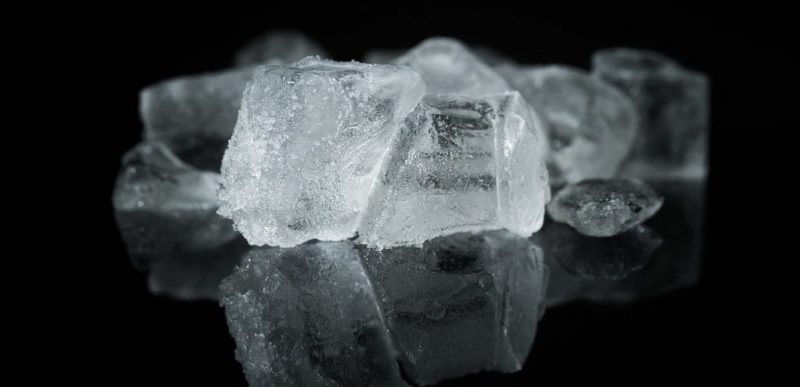We explain what the solid state is and what the physical characteristics of this state of matter are. Examples of solids.

What is solid state?
It is called a solid state one of the four essential ways in which matter presents itself along with liquid, gaseous and plasma. These forms are called states of aggregation of matter.
Matter in a solid state (or simply solids) is characterized by a specific arrangement of its particles, based on very rigid and strong bonds, which translates into a very well defined physical structure. This occurs due to the cohesive forces between the particles, responsible for maintaining the shape and volume of the solid stable, and for giving it a certain margin of hardness and resistance.
However, these forces can be overcome through physical phase change processes being able to convert a solid into a liquid or a gas. Such processes are called:
- Fusion Physical process that consists of applying heat to a solid to increase its temperature until it reaches its melting point (temperature at which the solid passes into the liquid state, at this temperature the solid and the liquid coexist in thermodynamic equilibrium). When the temperature exceeds this point, the energy of the solid increases enough to break the cohesion between its particles and causes the phase change. Fusion also depends on the pressure to which the solid is subjected.
- Sublimation. Physical process by which a certain solid passes directly into the gas phase, without first passing through the liquid phase. This can be achieved by manipulating the temperature and pressure conditions specifically for each solid, thus preventing it from passing through the liquid phase before reaching the vapor. An example of this is the sublimation of solid iodine (I), where a violet gas is produced.
See also: States of matter
Solid State Physical Characteristics
Matter in solid state has the following characteristics:
- Rigidity Generally, matter in a solid state resists deformation. For example: twists, folds, splits. Only if their resistance is overcome do solids change shape (permanently or temporarily, depending on their elasticity).
- Incompressibility Unlike gases and liquids, solids cannot be compressed, that is, their particles can no longer be closer together. However, when subjected to extreme compression forces, they tend to fracture or break down into smaller pieces.
- Hardness In general, solids are resistant to being penetrated by other solids, even to their surface being scratched. This is known as hardness, the physical strength against the action of other solids. The hardest material known is diamond.
- Fragility Solids can be broken into smaller pieces.
- Elasticity Contrary to fragility and hardness, elasticity is the ability of certain solids to undergo a momentary deformation, under the action of a force, and then return to their original shape once the action of said force has ended. Elastic materials have a shape memory that allows them to return to their previous arrangement.
- High density Most solids have a relatively high density because the particles that make them up are closely united.
- Malleability Some solid bodies have the ability to be shaped by deformation. Due to this property, thin sheets of a material can be obtained without breaking.
- Defined shape. Being rigid, solids have defined shapes and do not flow like liquids and gases.
Solid State Examples
Some examples of matter in a solid state are:
- The metals. With the sole exception of mercury (Hg), metals at room temperature retain their solidity and hardness due to the metallic bonds between their atoms. However, if given enough heat (such as in forges or foundries), metals flow like liquids and can take on other forms.
- The ice. Liquid water, when brought to its freezing point, that is, when heat energy is removed until it is brought to 0 ºC, proceeds to crystallize and become ice, a transparent and solid substance.
- The stones. Composed of minerals and calcareous or sedimentary elements, the stones that we find on any path are the clearest example of solidity possible on the planet.
- The concrete. Result of the union of materials such as gravel, water and cement powder, first as a wet paste and then as an extremely hard material when dried, it is used daily in the construction industry.
- The bones. Mineralized with calcium taken from our diet, the bones of our body or the body of any vertebrate animal are those that provide the greatest strength to the body.
References
- “Physicochemistry” by Ira N. Levine. Volume 1, 5ta edition. (2004)
- “Chemical Principles: The Quest for Insight” by Atkins, Peter; Jones, Loretta, 4ta edition. (2008) W H Freeman and Company. ISBN 0-7167-7355-4





